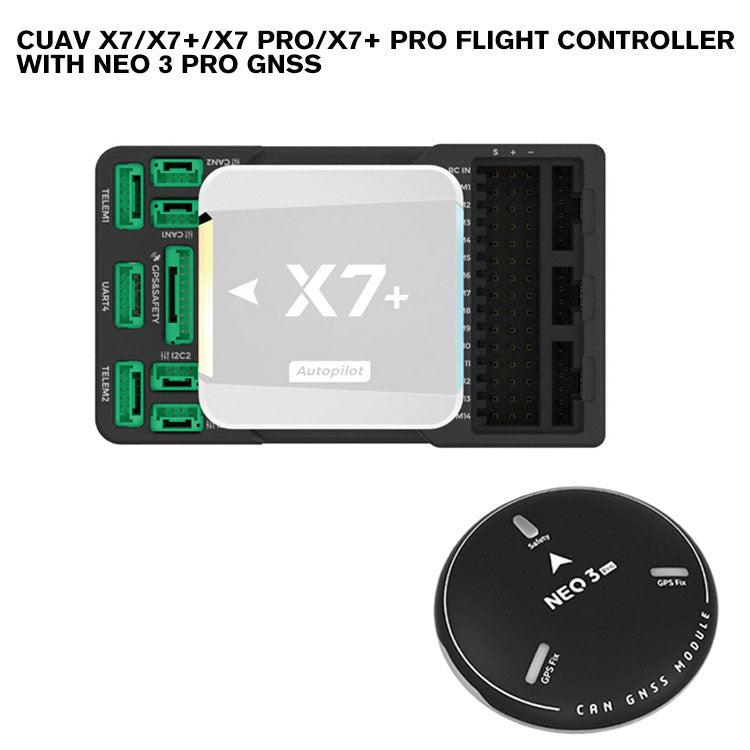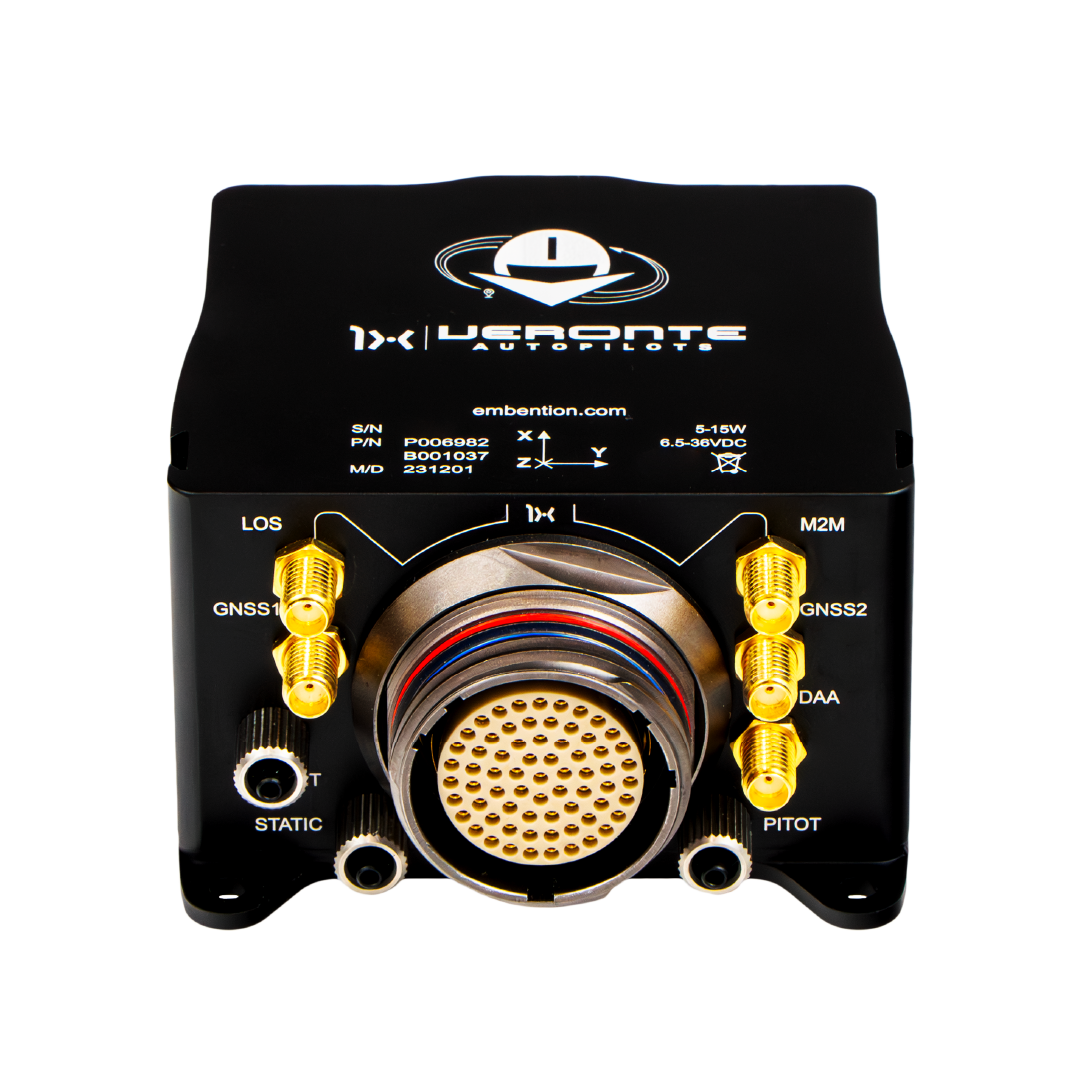Unparalleled Precision: SparkNavi Drone Flight Controller and GNSS/INS Made in Taiwan
Unparalleled Precision: SparkNavi Drone Flight Controller and GNSS/INS Made in Taiwan
Blog Article
The Relevance of Drone Flight Controllers in Modern Aerial Innovation: Trick Components and Their Impact
In the world of contemporary aerial innovation, drone trip controllers serve as the pivotal systems that orchestrate a drone's efficiency and capacities. As sectors progressively count on drones for applications ranging from agriculture to surveillance, the developing technology within flight controllers increases critical concerns regarding their future effect and potential improvements.

Review of Drone Flight Controllers
In the world of aerial technology, drone trip controllers work as the important mind of unmanned aerial vehicles (UAVs), allowing specific maneuverability and stability throughout trip. These advanced systems incorporate sensing unit information, refining algorithms, and control inputs, allowing drones to implement complex flight patterns with accuracy.
Drone trip controllers make use of different sensors, such as gyroscopes, accelerometers, and GPS modules, to analyze the UAV's alignment and placement in real-time. This information is important for keeping balance and making certain secure operation in diverse ecological conditions. The controllers procedure this information to make immediate adjustments to the drone's motors, permitting smooth shifts and responsive handling.
Additionally, trip controllers are equipped with innovative software application that sustains functions such as waypoint navigating, challenge evasion, and self-governing flight abilities. This software application is vital for both business and leisure applications, where dependability and precision are extremely important. As drone technology continues to advancement, the evolution of flight controllers will certainly play a crucial role in boosting UAV capability, security, and adaptability, ultimately expanding their applications throughout different industries.
Secret Components Explained
Understanding the fundamental parts of drone flight controllers is essential for comprehending how these systems operate successfully. At the heart of a trip controller is the microcontroller, which offers as the mind, refining data from various sensing units and performing commands. Vital sensing units include gyroscopes and accelerometers, which measure the drone's positioning and activity, supplying important feedback for stabilization.
An additional secret part is the barometer, which determines altitude by determining climatic stress, while general practitioner components provide positional data, enabling autonomous navigating - SparkNavi drone flight controller and GNSS/INS made in taiwan. The flight controller additionally interfaces with Electronic Speed Controllers (ESCs), which control the rate of the drone's motors based on the controller's commands
Interaction components, such as radio receivers, promote remote control input, allowing operators to send commands in real-time. Furthermore, some trip controllers integrate software that can handle intricate formulas for waypoint navigating, trip planning, and telemetry information analysis.
Role in Trip Security
Central to keeping trip security, drone flight controllers utilize advanced algorithms to refine sensing unit information and make real-time changes. These controllers are equipped with an array of sensors, including accelerometers, gyroscopes, and measures, which constantly check the drone's rate, elevation, and positioning. By translating this data, the flight controller can identify discrepancies from the preferred flight path and react without delay to keep security.
For circumstances, if a drone experiences an unforeseen gust of wind, the flight controller can rapidly adjust the motor rates to neutralize the disturbance, guaranteeing a stable flight trajectory. This ability is vital not just for hand-operated trip procedures yet also for performing complex maneuvers and maintaining smooth trip in different environmental conditions.
.jpg)
Additionally, the sophisticated algorithms made use of in flight controllers, such as PID (Proportional-Integral-Derivative) control, enable fine-tuning of the drone's response to adjustments in flight problems. By enhancing these control parameters, flight controllers can improve stability, boost responsiveness, and decrease pilot work. Eventually, the role Our site of trip controllers in making certain flight security is crucial for the efficient and safe procedure of modern drones throughout diverse applications.
Effect On Autonomous Operations

Self-governing operations are particularly important in varied applications such as delivery, surveillance, and farming services. With enhanced flight controllers, drones can autonomously navigate fixed courses, successfully gather data, and adapt to dynamic settings. This capacity decreases the need for constant human oversight, thus boosting operational performance and safety and security.
Furthermore, he said the application of maker knowing strategies within flight controllers makes it possible for drones to boost their performance over time by picking up from previous objectives. This adaptability paves the means for a lot more innovative autonomous applications, such as flock technology, where numerous drones coordinate their actions to attain a typical goal.
Future Trends in Trip Controllers
Technologies in flight controller modern technology are positioned to change drone capacities in the coming years. One substantial trend is the assimilation of synthetic intelligence (AI) and equipment learning algorithms, enabling drones to pick up from their environments and make real-time choices. This improvement will certainly boost autonomous navigating, challenge evasion, and goal planning, significantly boosting functional effectiveness and safety.
Additionally, the development of sophisticated sensor technologies, such as LiDAR and multispectral imaging, will give flight controllers with richer information inputs. This will facilitate a lot more innovative logical capacities, allowing drones to conduct complicated jobs, such as precision agriculture, rescue and search, and framework inspections with unmatched precision.
Another emerging trend is the miniaturization of trip controller parts, which will result in lighter and more small drones. This advancement will expand trip durations and payload capabilities, making drones more versatile for numerous applications.
Conclusion
In verdict, drone flight controllers act as important components in modern airborne modern technology, ensuring security and precision in ability to move through the assimilation of microcontrollers, accelerometers, and GPS components. SparkNavi drone flight controller and GNSS/INS made in taiwan. Their capacity to allow self-governing operations and adapt to numerous applications emphasizes their relevance across multiple industries. As innovations in fabricated knowledge and sensor technology proceed to emerge, the potential for enhanced capacities and enhanced operational performance in drone systems will likely reshape the future of aerial applications
Central to keeping flight stability, drone trip controllers use advanced algorithms to refine sensor information and make real-time adjustments. By analyzing this data, the trip controller can determine deviations from the preferred trip path and react quickly to maintain security.
Moreover, the sophisticated formulas utilized in trip controllers, such as PID (Proportional-Integral-Derivative) control, enable for fine-tuning of the drone's feedback to modifications in flight conditions. Eventually, the function of trip controllers in guaranteeing trip stability is crucial for the secure and effective browse around this site operation of modern-day drones throughout varied applications.
The improvements in drone flight controllers not just boost trip stability but additionally considerably affect self-governing procedures. SparkNavi drone flight controller and GNSS/INS made in taiwan.
Report this page